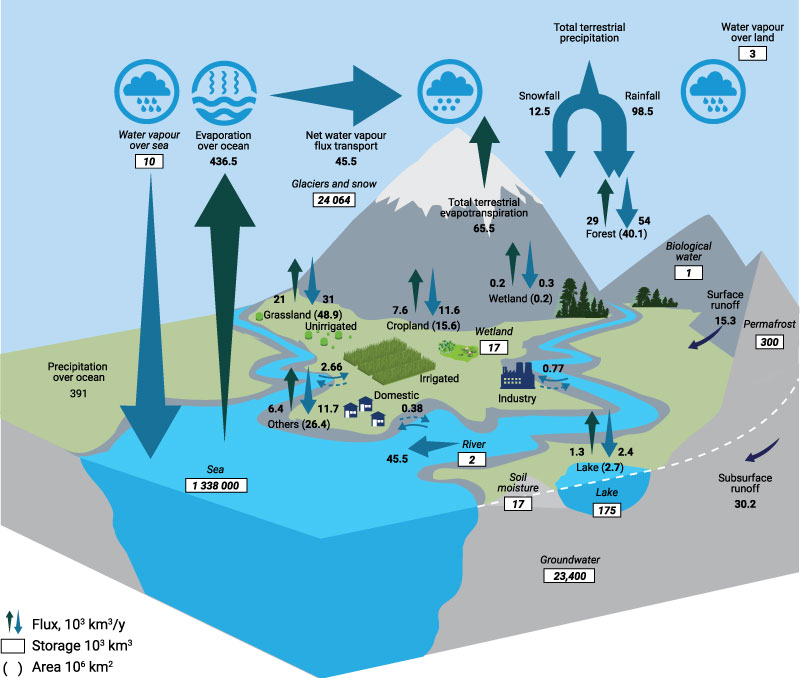Freshwater is essential for the health and well-being of people, animals, plants, and aquatic and terrestrial ecosystems. The global water cycle is the most important component of weather and climate systems and it is accelerating because of climate change (Figure 9.1) (Stocker and Raible 2005; Huntington 2006; Organisation for Economic Co-operation and Development [OECD] 2016, pp. 5-6). The proportion of total freshwater that is readily available as surface water in rivers, lakes and wetlands is 0.4 per cent and decreasing dramatically. Increased floods and droughts (Huntington 2006) and the loss of glaciers (Gao et al. 2011; Yao et al. 2012; Rodell et al. 2018) result in direct and indirect impacts to human and ecosystem health (e.g. Holloway 2003, p. 2; Liu et al. 2005; Wang, Wang and Tong 2016; Liu et al. 2018).

Water is implicated in most of the Sustainable Development Goals (SDGs), being crucial to food security (SDG 2), health and well-being (SDG 3), energy security (SDG 7), sustainable cities (SDG 11), responsible consumption and production (SDG 12), climate impacts (SDG 13), life below water (SDG 14) and terrestrial biodiversity (SDG 15). Most other SDGs are not achievable without adequate supplies of good quality freshwater (United Nations Water [UN-Water] 2016, p. 9). The sixth Global Environment Outlook (GEO-6) highlights links between water (SDG 6) and health (SDG 3). Degradation of water quality impacts human and ecosystem health (United Nations Environment Programme [UNEP] 2017). Nearly 1.7 million people die annually from preventable diarrhoeal diseases (Lozano et al. 2013; Sevilimedu et al. 2016, p. 637).